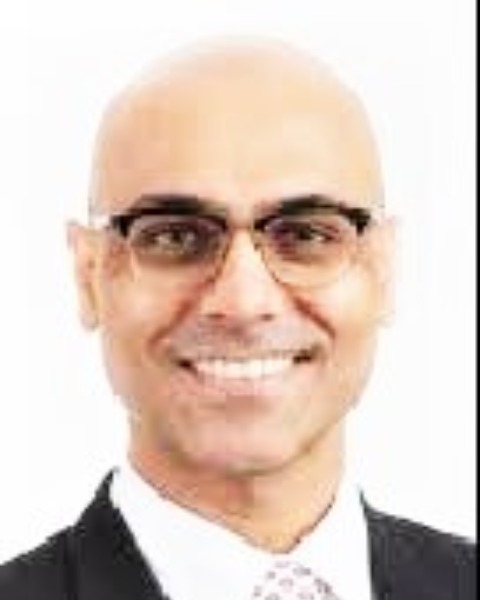Abstract Session
Rapid Fire Research Forum
(AS2) Comparison of Multi-level Low-grade Techniques versus Three-column Osteotomies in Adult Spinal Deformity Surgery: Does Harmonious Correction Matter?
Monday, April 24, 2023
9:10am - 9:15am PST
Location: Los Angeles Convention Center, 406AB

Muhammad B. Janjua, MD
Assistant Professor of Neurosurgery
Washington University School of Medicine
St. Louis, Missouri, United States
Presenting Author(s)
Disclosure(s):
Peter G. Passias, MD: No relevant disclosure to display
Introduction: Recent debate has arisen between whether to use a three-column osteotomy(3CO) or multiple low-grade techniques(MLG) to treat more rigid deformities in adult spinal deformity(ASD) surgery. High-intensity 3CO may increase the risk of complications, while MLG approaches may be less effective. We sought to compare the outcomes of 3CO and MLG techniques performed in ASD-corrective surgeries.
Methods: ASD patients with baseline(BL) PI-LL>30° and two-year(2Y) data included. Groups: 1) 3CO or 2) MLG[3+ SPOs or 3+ ALIFs with no 3CO]. Groups were propensity score matched(PSM) for BL PI-LL and prior fusion. Segmental Utility Ratio(SU Ratio) assessed relative segmental correction[segmental correction divided by overall correction in lordosis divided by number of thoracolumbar interventions(IBF,SPO,3CO)]. Paired t-test assessed lordotic distribution by differences in lordosis between adjacent lumbar disc spaces(i.e.L1-L2 to L2-L3,etc). Multivariable analysis, controlling for age, gender, CCI, and baseline PI, evaluated the complication rates, radiographic and patient-reported outcomes between groups.
Results: 108 patients included. 45% underwent MLG, 41% 3CO. MLG had higher CCI and lower BMI(both p < .05). MLG patients had less previous fusions than 3COs(31% vs. 80%,p < .001). MLG patients accrued 24% less blood loss, but 22% greater operative time(565 min vs. 419,p=.009). Upon PSM, 3COs had greater segmental and relative correction at each level(SU Ratio means: 3CO:69% vs. MLG:23%,p < .001). However, 3COs had lordotic differences between two adjacent lumbar disc pairs(range: -0.5-9.0°,p=.009), while MLG was more harmonious(range: 2.2-6.5°,p>0.4). MLG were more often realigned to age-adjusted standards(OR: 5.6,[1.2-46.4];p=.033). MLG were less likely to develop neurological complications or undergo reoperation(OR: 0.4,[0.1-0.9];p=.041). Adjusted analysis revealed MLG patients more often met SCB in ODI(OR: 5.3,[1.1-26.8]; p=.043).
Conclusion : Multi-level low-grade techniques showed better utility in lumbar distribution and age-adjusted global correction, while minimizing neurological complications and reoperation rates by two years. In selective instances, these techniques may offer the spine deformity surgeon a safer alternative when correcting severe adult spinal deformity.
Methods: ASD patients with baseline(BL) PI-LL>30° and two-year(2Y) data included. Groups: 1) 3CO or 2) MLG[3+ SPOs or 3+ ALIFs with no 3CO]. Groups were propensity score matched(PSM) for BL PI-LL and prior fusion. Segmental Utility Ratio(SU Ratio) assessed relative segmental correction[segmental correction divided by overall correction in lordosis divided by number of thoracolumbar interventions(IBF,SPO,3CO)]. Paired t-test assessed lordotic distribution by differences in lordosis between adjacent lumbar disc spaces(i.e.L1-L2 to L2-L3,etc). Multivariable analysis, controlling for age, gender, CCI, and baseline PI, evaluated the complication rates, radiographic and patient-reported outcomes between groups.
Results: 108 patients included. 45% underwent MLG, 41% 3CO. MLG had higher CCI and lower BMI(both p < .05). MLG patients had less previous fusions than 3COs(31% vs. 80%,p < .001). MLG patients accrued 24% less blood loss, but 22% greater operative time(565 min vs. 419,p=.009). Upon PSM, 3COs had greater segmental and relative correction at each level(SU Ratio means: 3CO:69% vs. MLG:23%,p < .001). However, 3COs had lordotic differences between two adjacent lumbar disc pairs(range: -0.5-9.0°,p=.009), while MLG was more harmonious(range: 2.2-6.5°,p>0.4). MLG were more often realigned to age-adjusted standards(OR: 5.6,[1.2-46.4];p=.033). MLG were less likely to develop neurological complications or undergo reoperation(OR: 0.4,[0.1-0.9];p=.041). Adjusted analysis revealed MLG patients more often met SCB in ODI(OR: 5.3,[1.1-26.8]; p=.043).
Conclusion : Multi-level low-grade techniques showed better utility in lumbar distribution and age-adjusted global correction, while minimizing neurological complications and reoperation rates by two years. In selective instances, these techniques may offer the spine deformity surgeon a safer alternative when correcting severe adult spinal deformity.
